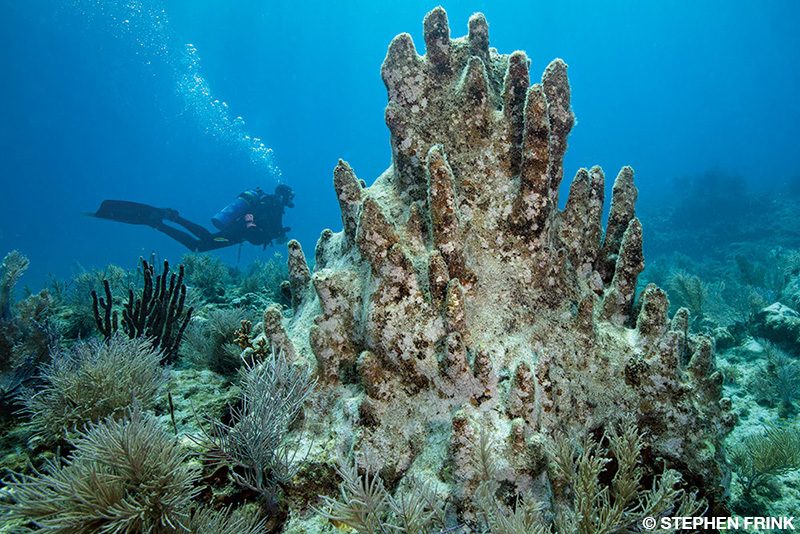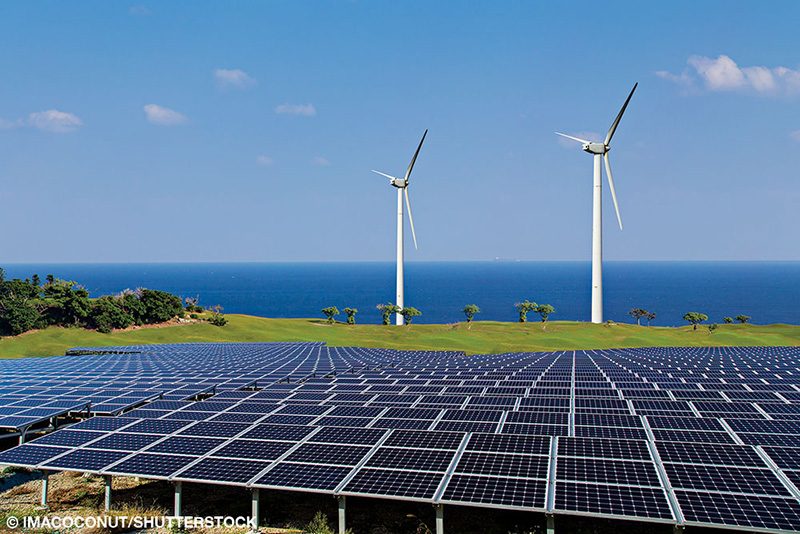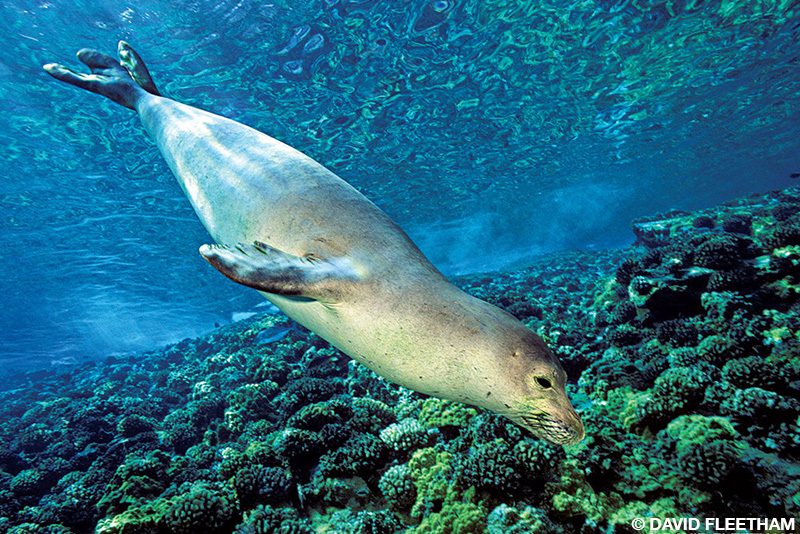Fifteen years ago, I was in Fiji on assignment for the book Feeling the Heat, a collection of dispatches from 10 journalists who traveled the world to report on the already visible effects of climate change. In the Somosomo Strait south of Vanua Levu, I saw my first bleached coral. Millions of heat-stressed coral polyps had expelled their symbiotic algae, turning about a third of the reef wedding-cake white.
“Did you see the bleached coral?” I asked one of the other divers after climbing back onto our boat. “Really? I thought they were supposed to be white like that,” she replied before excitedly pointing to a fruit bat flying overhead. I’ve more recently witnessed bleached and dead coral in the overly warm waters of Australia, Hawaii, Florida and Cuba, including during the massive global bleaching event of 2014-2017 documented in the film Chasing Coral.

Marine conservationists have long worried about the cascading effects of overfishing, pollution and habitat destruction — warnings provided by underwater ocean explorers such as Jacques Cousteau and Sylvia Earle. Now the effects of climate change — coral bleaching, ocean acidification, rising warming seas, intensified hurricanes, loss of polar ice and more — are not only damaging ecosystems but also altering the physical nature of the ocean: its circulation, temperature, chemistry and color.
Even if we solve all our other problems, we might still see the collapse of our living seas due to climate change alone. A warmer, more acidic ocean holds less dissolved oxygen, which is fine if you’re a marine jelly or microbial mat but is harmful for bony fish, marine mammals and many of the algae that give us more than half our oxygen.
In 2018, the United Nations Intergovernmental Panel on Climate Change, made up of the world’s leading scientists in the field, warned that global carbon emissions must be cut almost in half by 2030 if there’s any hope of keeping planetary warming at a dangerous but less than catastrophic level. While the window is closing, we can take active measures today to reverse course and begin to ameliorate some of the danger.
To be good stewards of our planet, my organization, Blue Frontier, has teamed up with the Center for the Blue Economy at the Middlebury Institute of International Studies to launch an Ocean Climate Action Plan (OCAP), which some people call the Blue New Deal. Beyond the obvious need for a rapid transition from fossil fuel to clean, safe, job-generating renewable energy, our report outlines eight priorities for making the coast and ocean more resilient.

We call for a complete reformation of the U.S. National Flood Insurance Program, major coastal infrastructure investment with a focus on protection and restoration of natural barriers and coastal habitats, new guidelines and systems for expanding offshore renewable energy production, a network of marine protected areas (MPAs) in the sea, new forms of assistance to greening ports and fishing communities, increased aquaculture and sea farming investment, and a revised National Disaster Recovery Framework, including creation of a new combatant command within the Department of Defense.
Two of these priorities — the call to expand MPAs and to restore living coastal zones including dunes, mangroves, salt marshes and seagrass meadows — will not only help ensure greater natural resilience in the face of the climate emergency but also should make for many happy divers. The U.S. is already a leader in the establishment of MPAs that act as biological reserves for the ocean much like our national parks do on land. These areas provide essential habitats for ocean and coastal wildlife, venues for scientific study and education, tremendous opportunities for recreation and dive tourism, and measurable resilience in the face of environmental insults such as ocean acidification.
Among the largest MPAs in the world is Northwest Hawaii’s Papahanaumokuākea, established by President George W. Bush and expanded by President Barack Obama, which contains 70 percent of U.S. coral reefs along with rare and endangered species such as the Hawaiian monk seal. MPAs help to restore damaged habitats and depleted populations of ecologically and economically valuable fish. Protected areas also act to maintain water quality and buffer coastal communities from intensified storms, sea-level rise and coastal erosion.
The OCAP would create a national framework in the design, regulation and management of new MPAs. Specifically, it would allow these MPAs to mitigate and adapt to climate change and act as blue carbon depositories that track how algae, kelp and seagrasses sequester excess carbon out of the atmosphere. They could also monitor the effects of krill, fish and whales, which convert small plants and animals into carbon-rich feces that sink into the deep ocean. Who knew that whale poop could save the planet?
Living shorelines — including dunes, salt marshes, seagrasses, oyster reefs and mangrove forests — provide multiple and invaluable ecosystem services. They filter and clean water, recharge aquifers and act as highly efficient storm barriers, nurseries and shelters for a wide variety of marine wildlife from minnows and manatees to seahorses, sharks and sawfish. They sequester huge amounts of atmospheric carbon, with mangrove forests doing so more effectively than any other type of plant community.

Strong U.S. leadership at home and abroad can bolster global efforts to establish new MPAs in places such as Antarctica’s Ross Sea or the Arctic Ocean, where many nations are contending for resources and sovereignty, and help guide the new United Nations high-seas treaty as delegates consider protections for the two-thirds of oceans that are beyond any nation’s jurisdiction. But it will take citizens, businesses and governments working together to turn the tide toward needed action.
Divers, who have the ability and privilege to understand the three-dimensional complexity and wonder of our living blue world, can be leading ambassadors in promoting common-sense solutions such as the OCAP. Consider the following ways to help:
- Read the evolving plan as it first appeared on the conservation science news platform Mongabay.
- Talk to your friends and family about the ocean–climate connection and how we can each make a difference.
- Encourage your dive shop, charter operators and other parts of the dive industry to become keystone business voices and leaders in the fight to advance ocean climate action.
- Support and mentor the many youth activists, such as Sea Youth Rise Up, Hannah4Change, Heirs To Our Oceans and EarthEcho International, who are working to make a difference on climate and other marine issues.
- Vote for the ocean! Support and elect candidates at the local, state and national levels who will act for a healthy ocean and vibrant communities from sea to shining sea.
Explore More
The following BBC short film was presented at the opening of the United Nations Ocean Conference in June 2017.
© Alert Diver — Q4 2019